Amazon S3
This guide contains the required information to set up S3 Sink in Vanus Connect.
Introduction
Amazon S3 (Simple Storage Service) is a highly scalable and durable object storage service provided by Amazon Web Services (AWS). It is designed to store and retrieve any amount of data from anywhere on the internet, making it ideal for a wide range of use cases such as backup and restore, disaster recovery, data archiving, content delivery, and big data analytics.
With Amazon S3 Sink in Vanus Connect, you can easily forward data or events to your S3 bucket automatically. The S3 Sink connector lets you save the events you need to any bucket of your choosing.
Prerequisites
Before forwarding events to an S3 bucket, you must have:
- A Vanus Cloud account.
- An Amazon Web Services account.
Getting Started
Step 1: Create an AWS User
Log in to the AWS Management Console using your root account credentials.
Navigate to the IAM service by searching for IAM① and clicking the IAM② service.
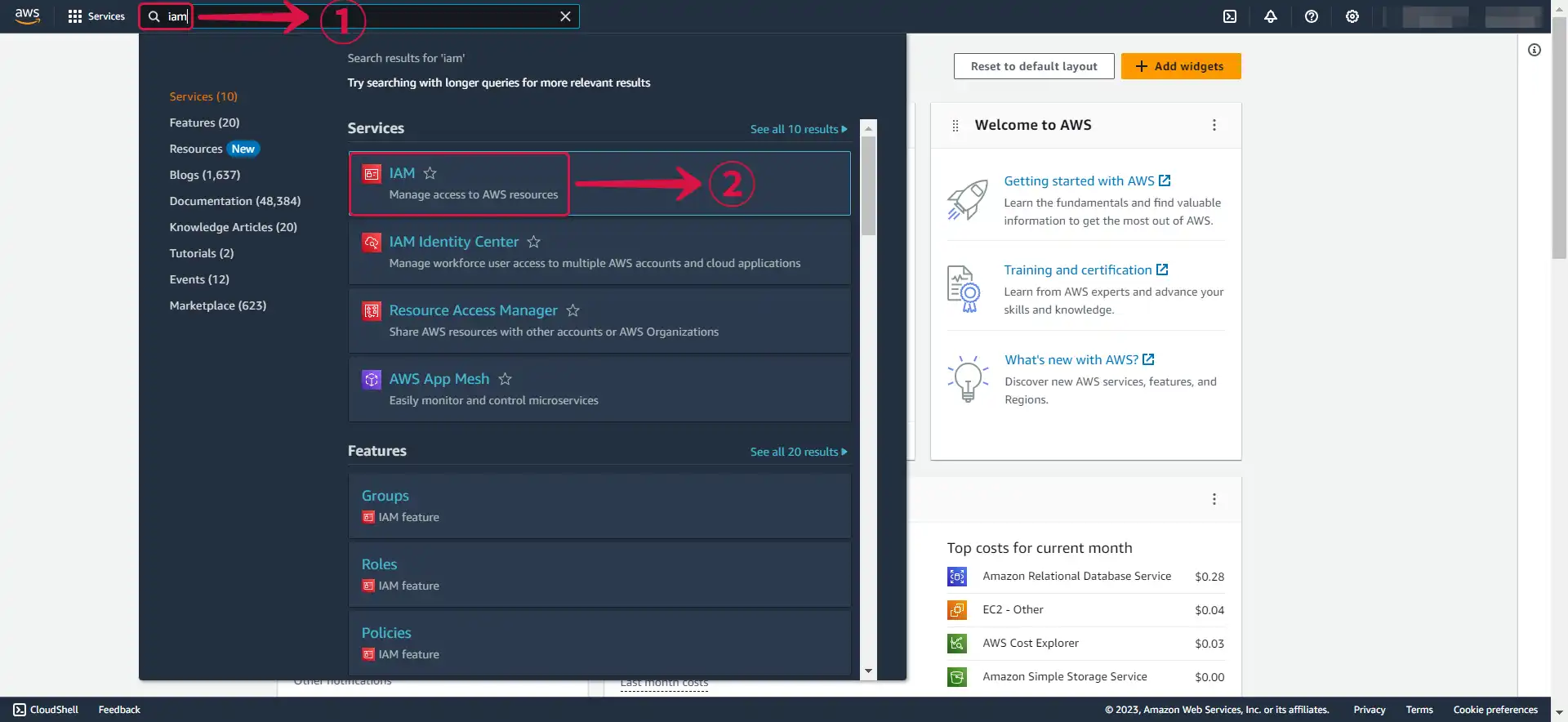
- Click on the Users tab③ in the left navigation menu, and then click the Create user④ button.
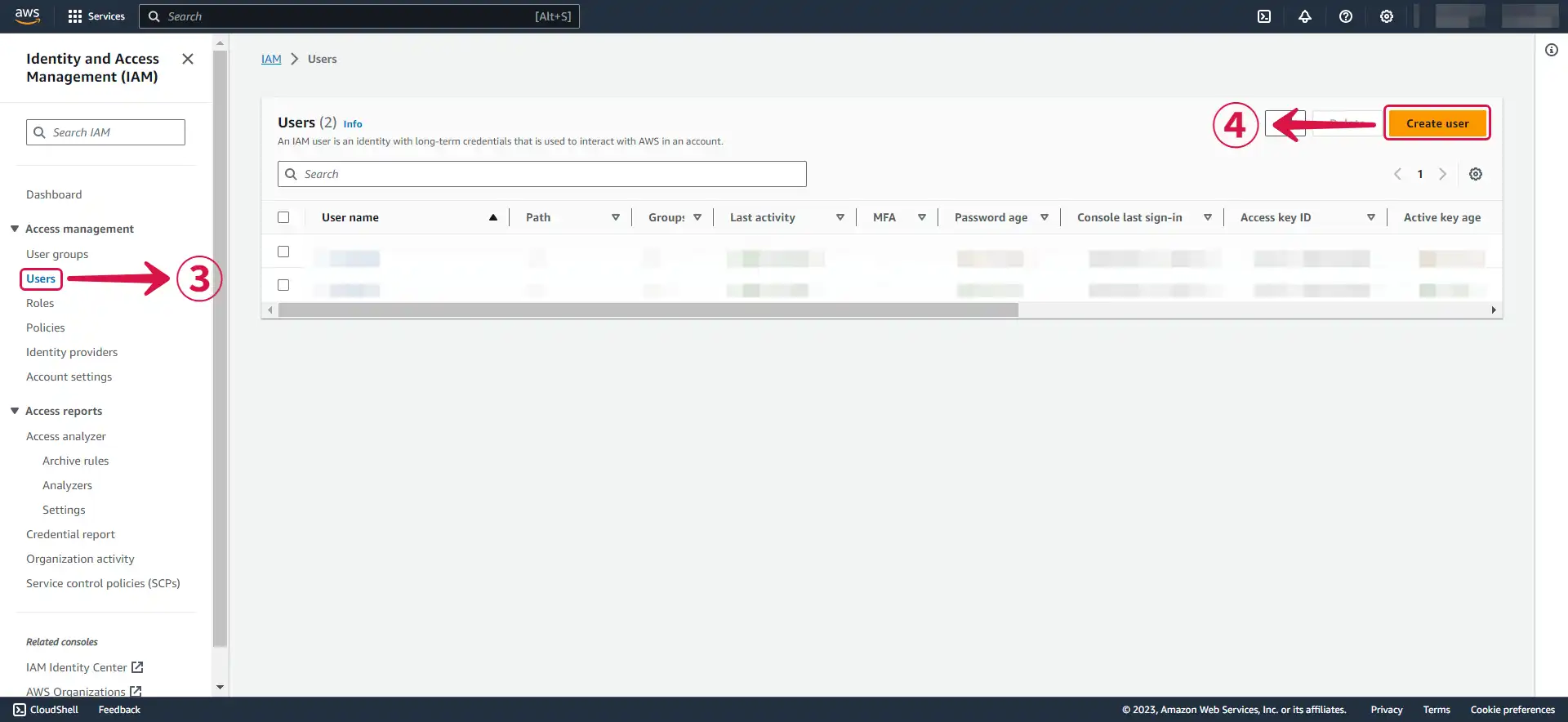
- Write your User name⑤ and click Next⑥.
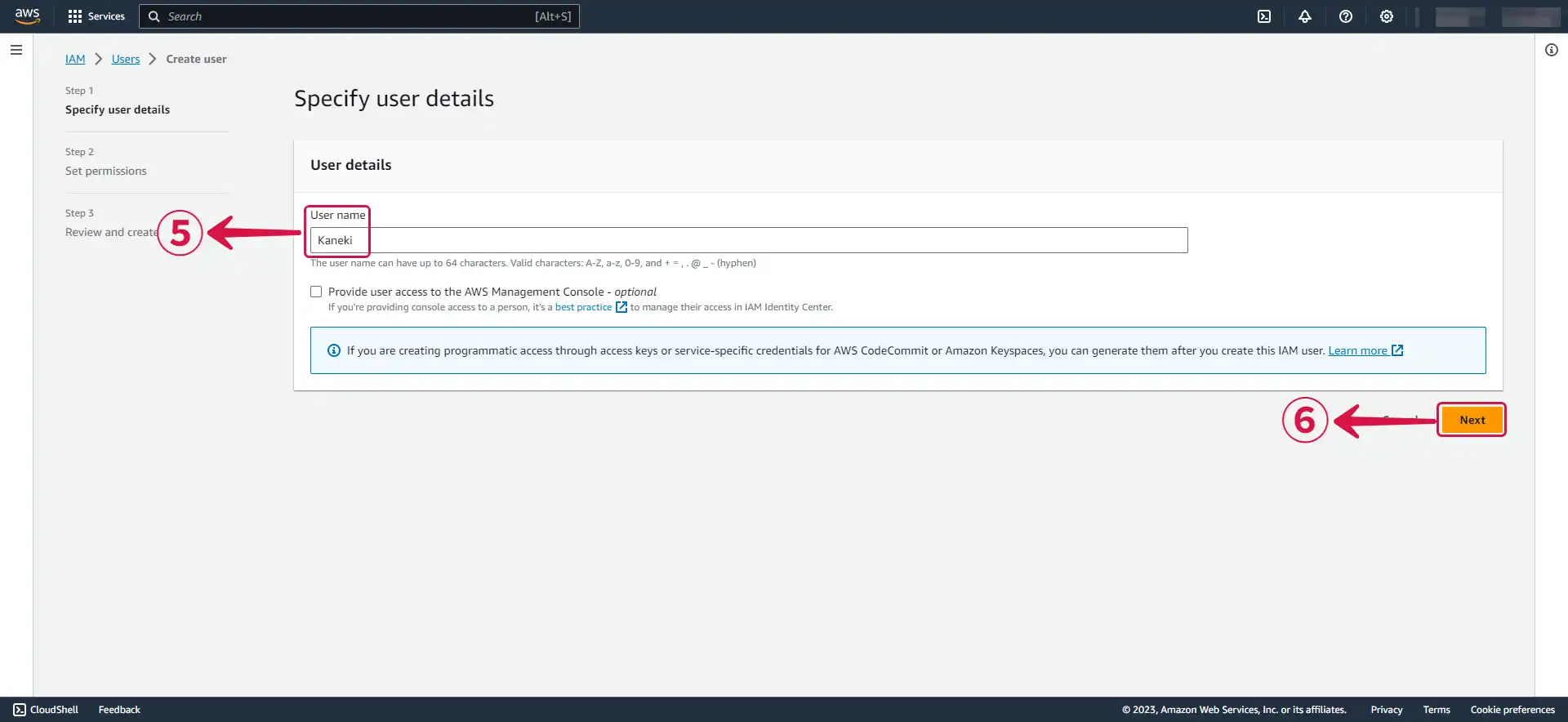
- Select Attach policies directly⑦, and click on Create policy⑧.

- Search for s3⑨ and select s3⑩.
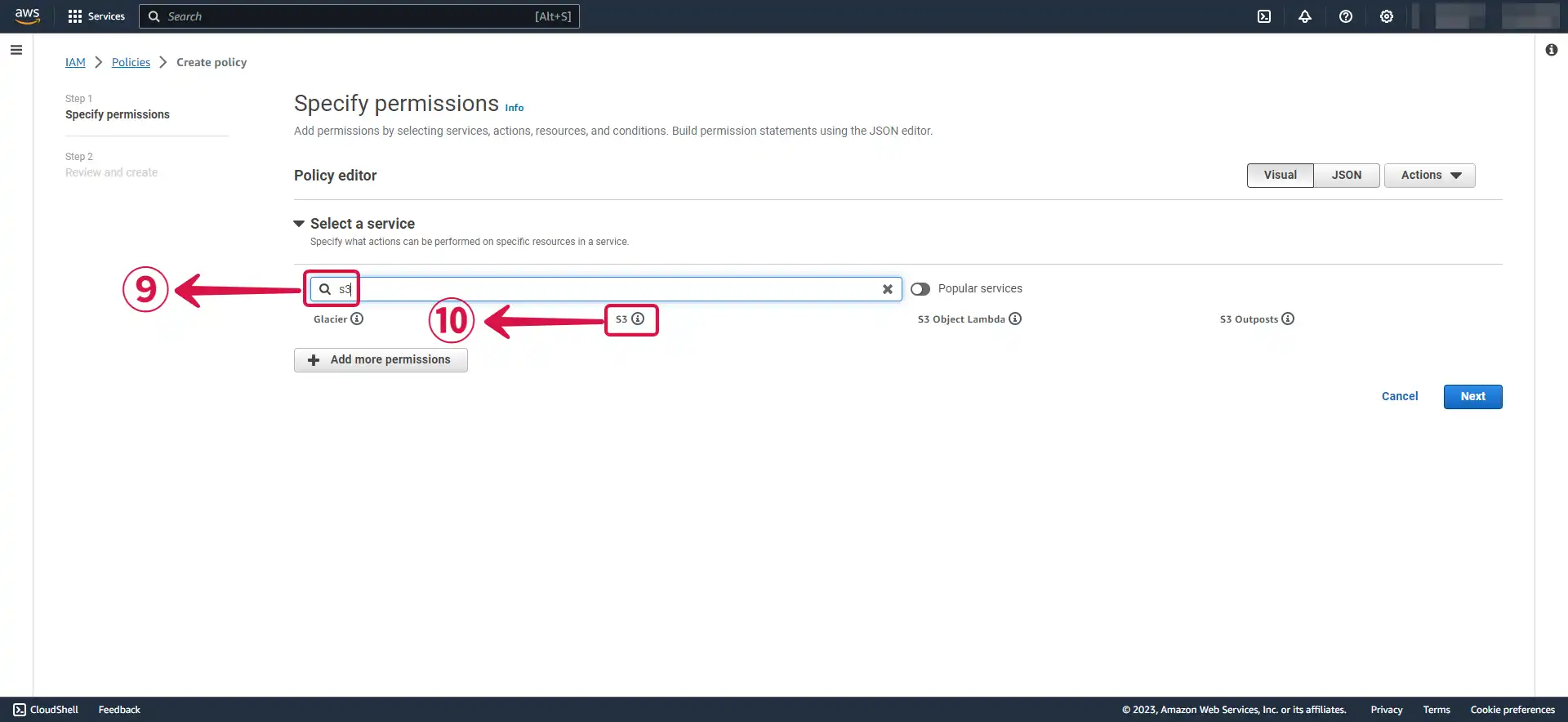
- Search⑪ and select the required Actions.
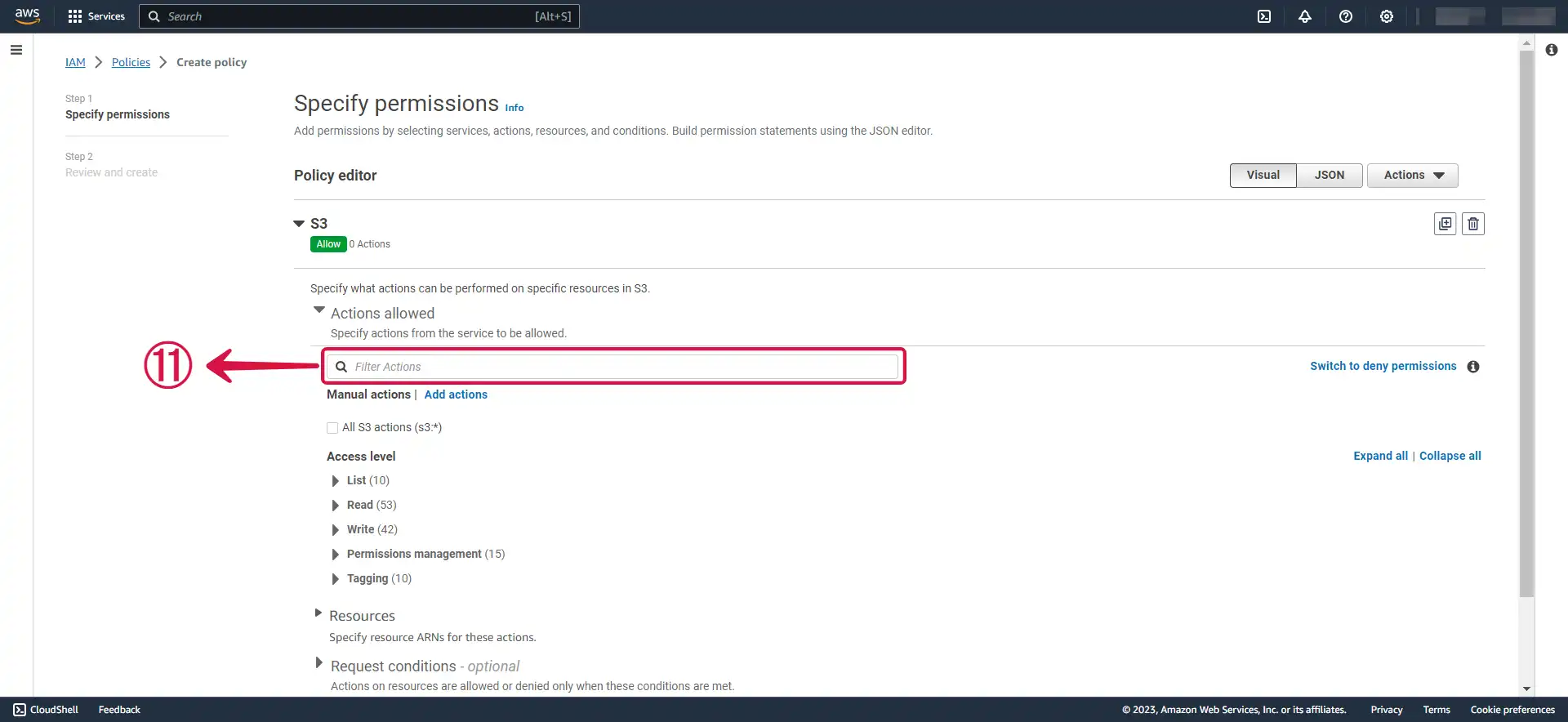
PutObject⑫GetObjectGetObjectVersionDeleteObjectDeleteObjectVersion

- Select Any⑬ and click Next⑭ to proceed to the next page.
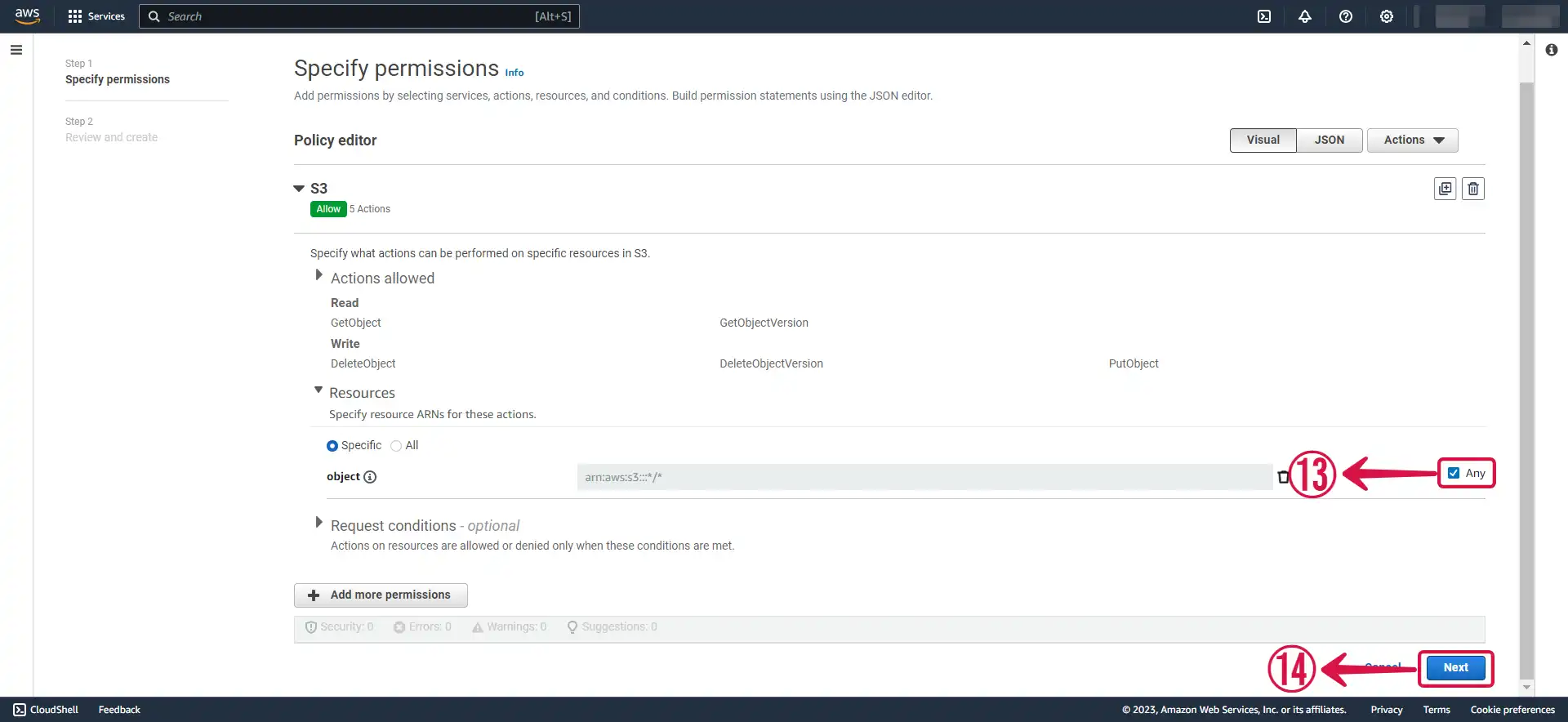
- Specify a Policy name⑮.
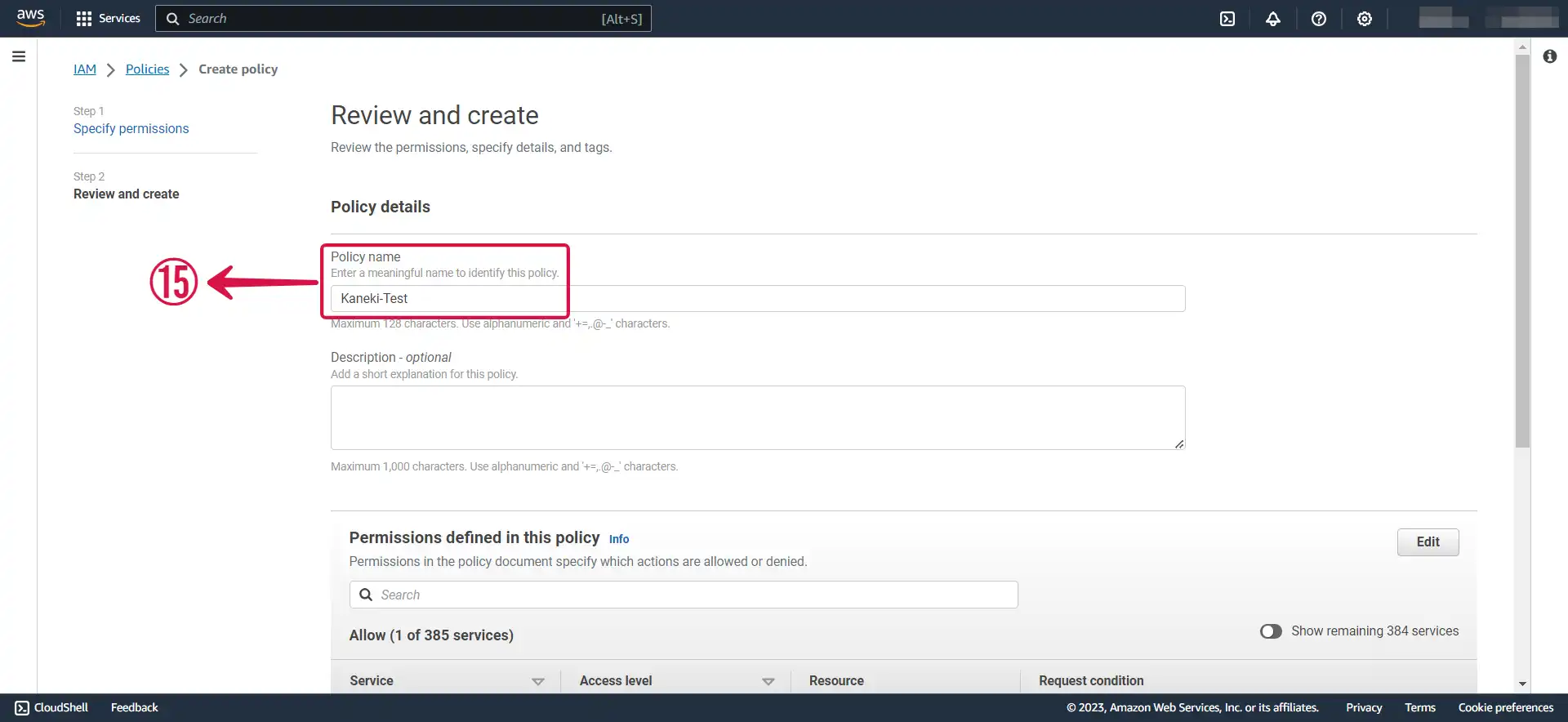
- Click Create policy⑯.
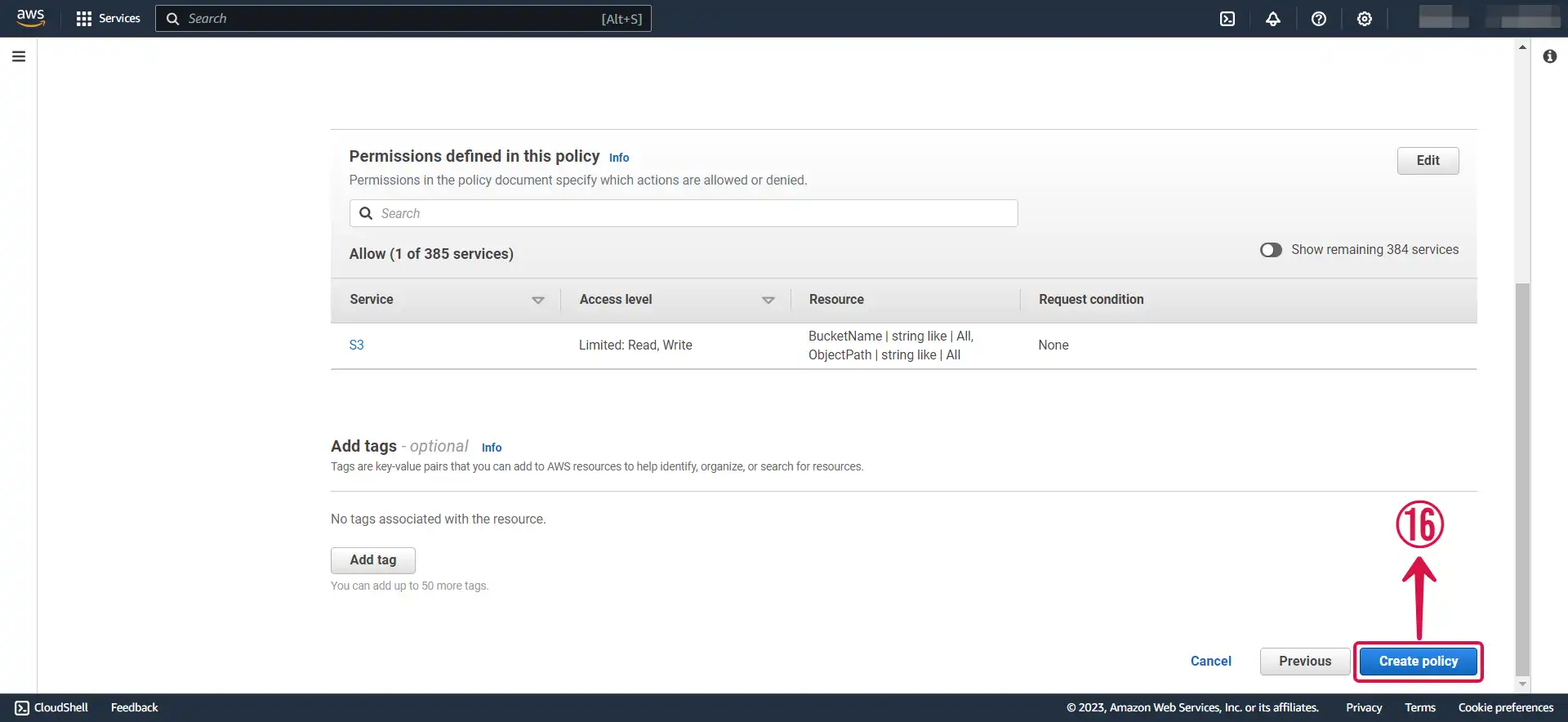
Return to your previous
TAB.Refresh⑰ the policy list, search⑱ for your custom policy, select your created policy⑲, and click Next⑳.
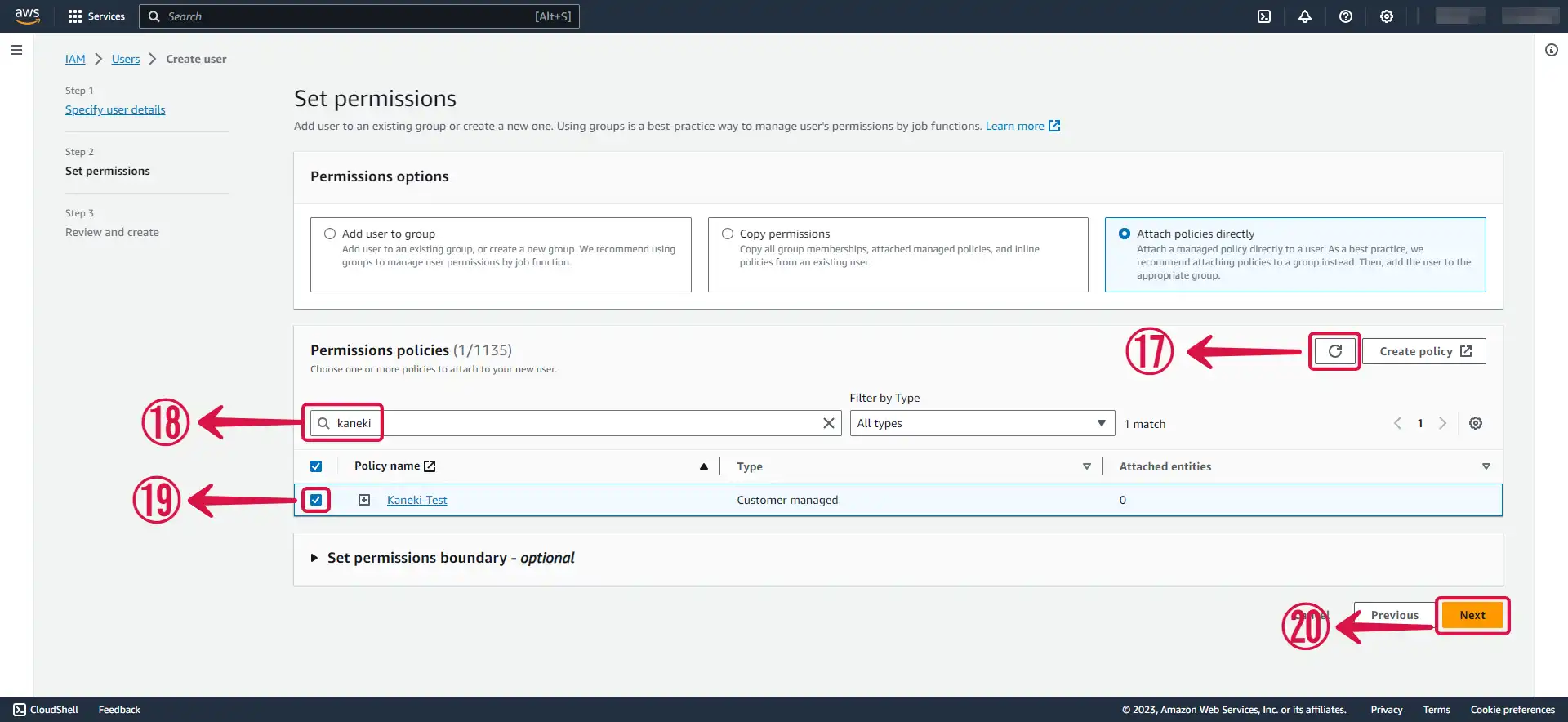
- Review and click Create user㉑.
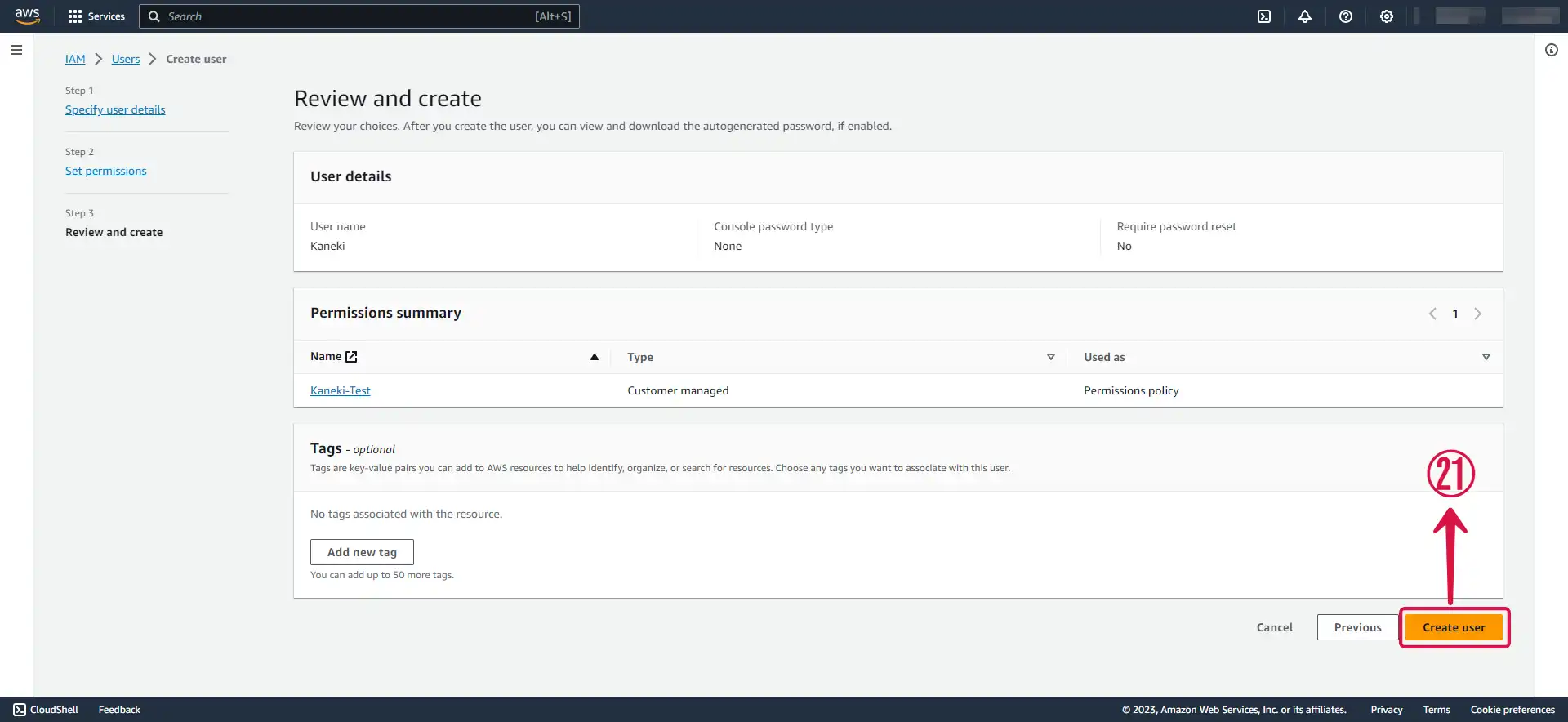
Step 2: Get your Access key and Secret access key
- Now click on the User① you just created.
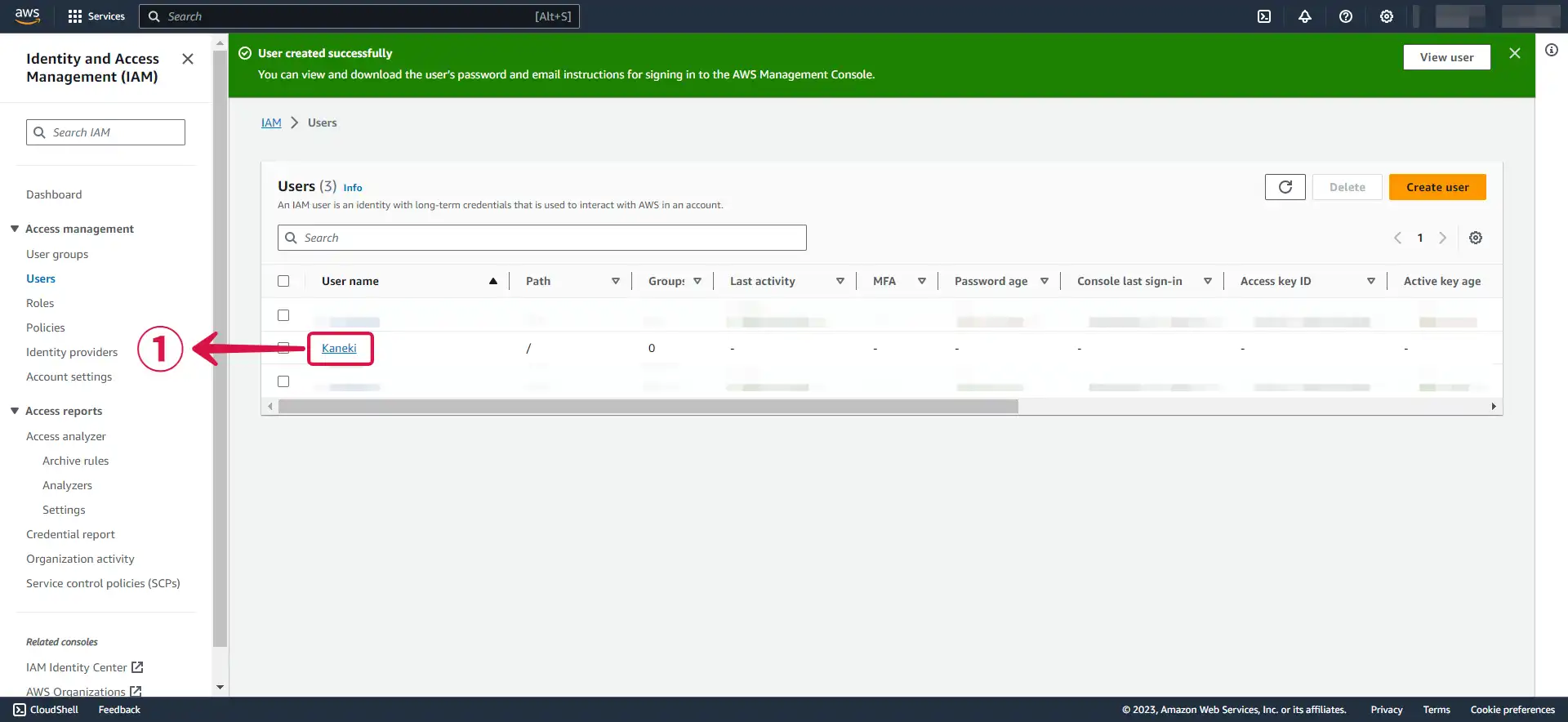
- Under Security credentials②, scroll down the page to
Access Keys, and Click Create access key③.
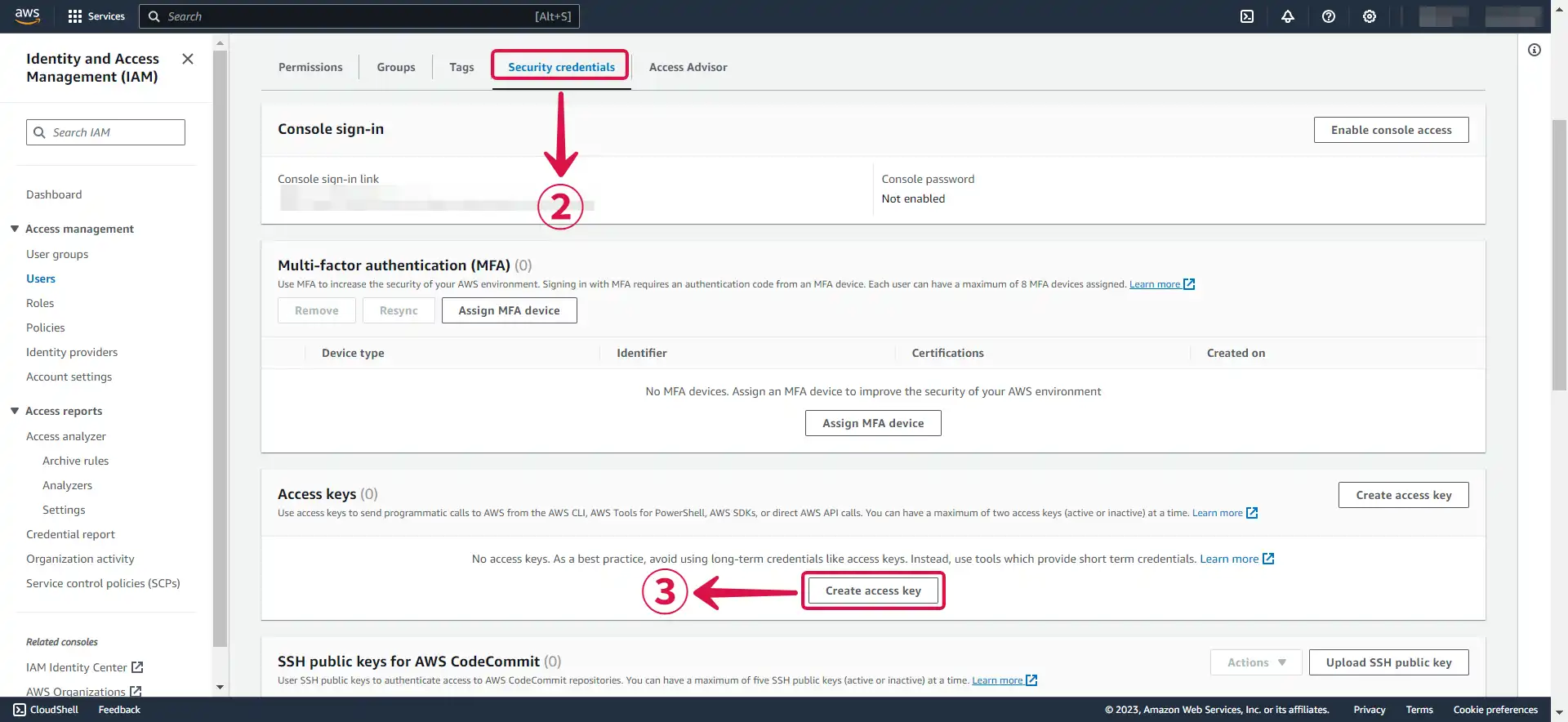
- Select Command line interface (CLI)④, tick the confirmation box⑤ and click Next⑥.
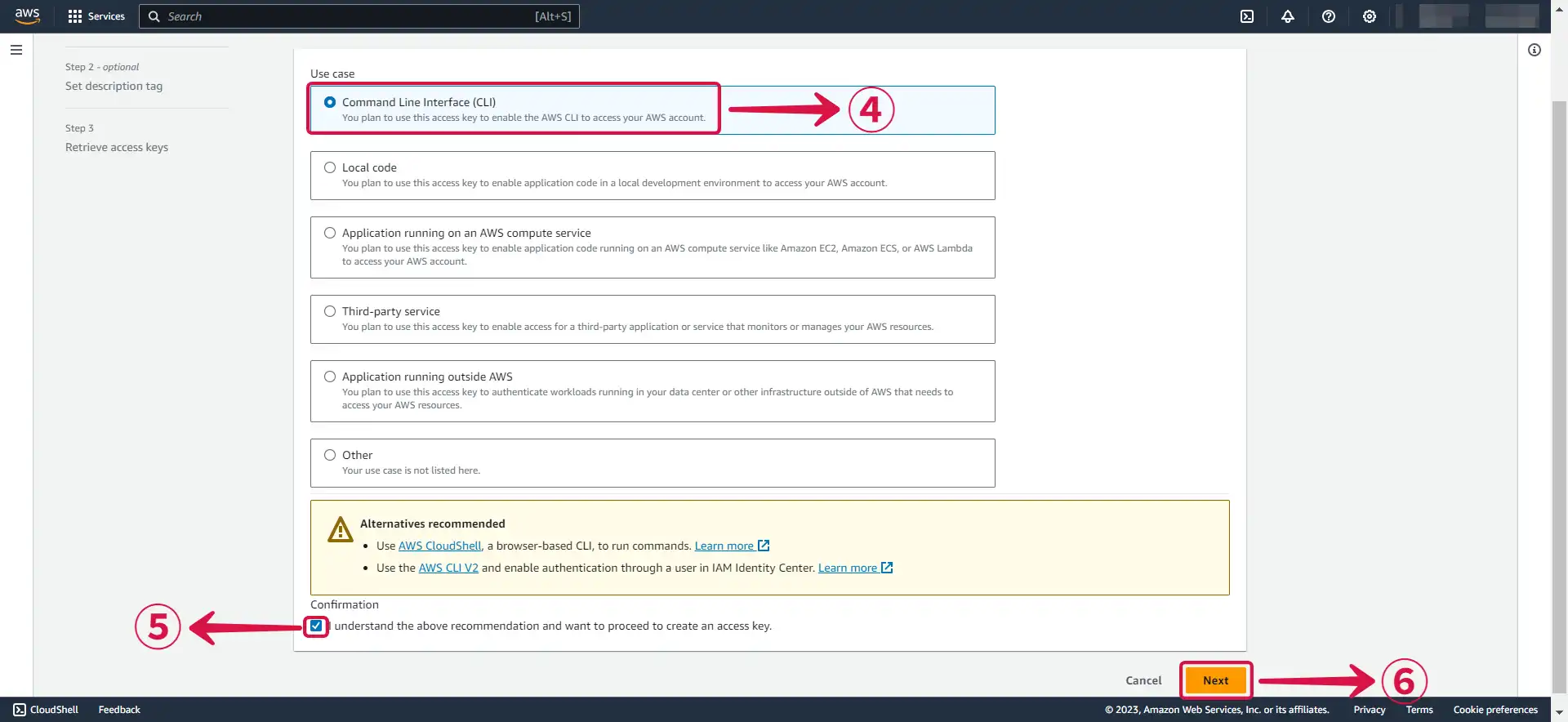
- Click Create access key⑦.
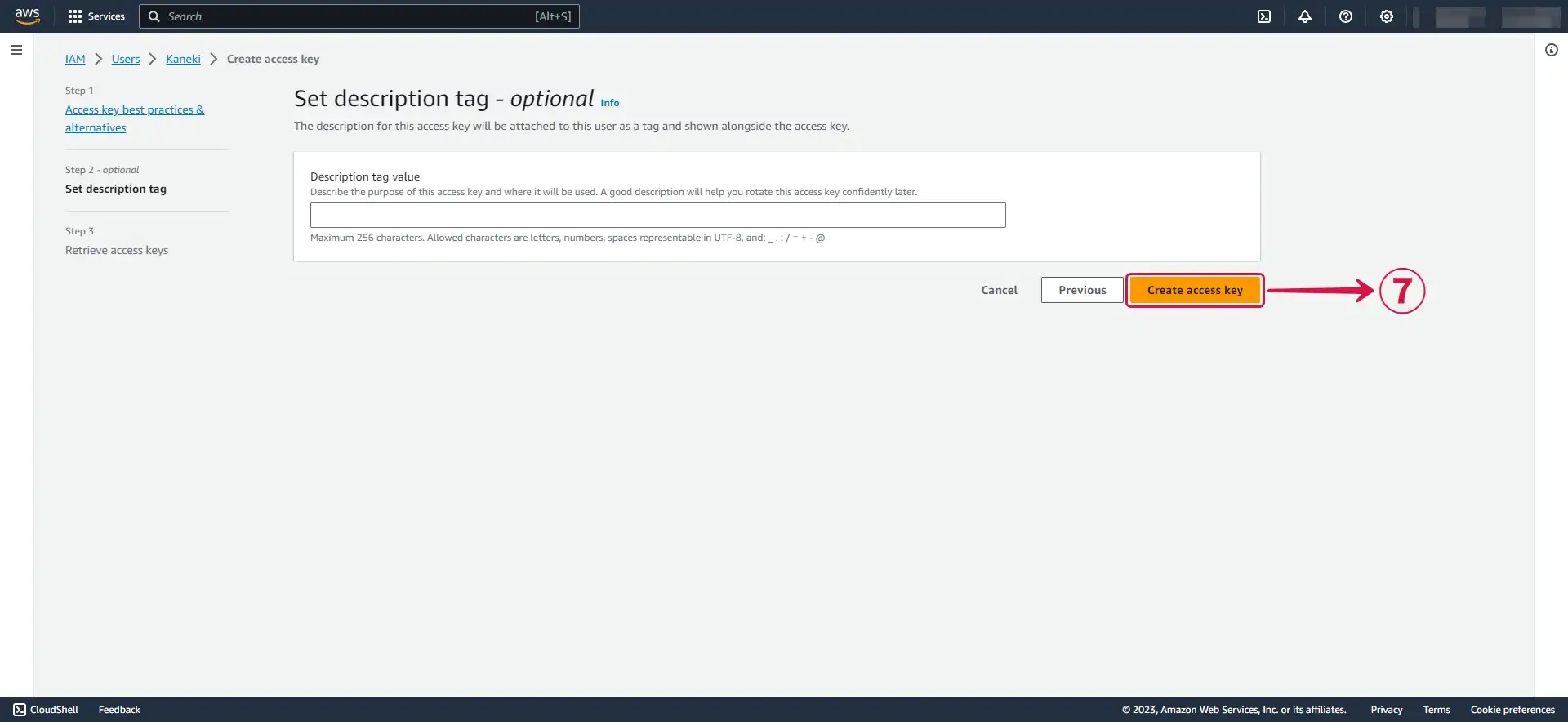
- Download your
Access keyandSecret access keyby clicking the Download .csv file⑧ button, and then click Done⑨.
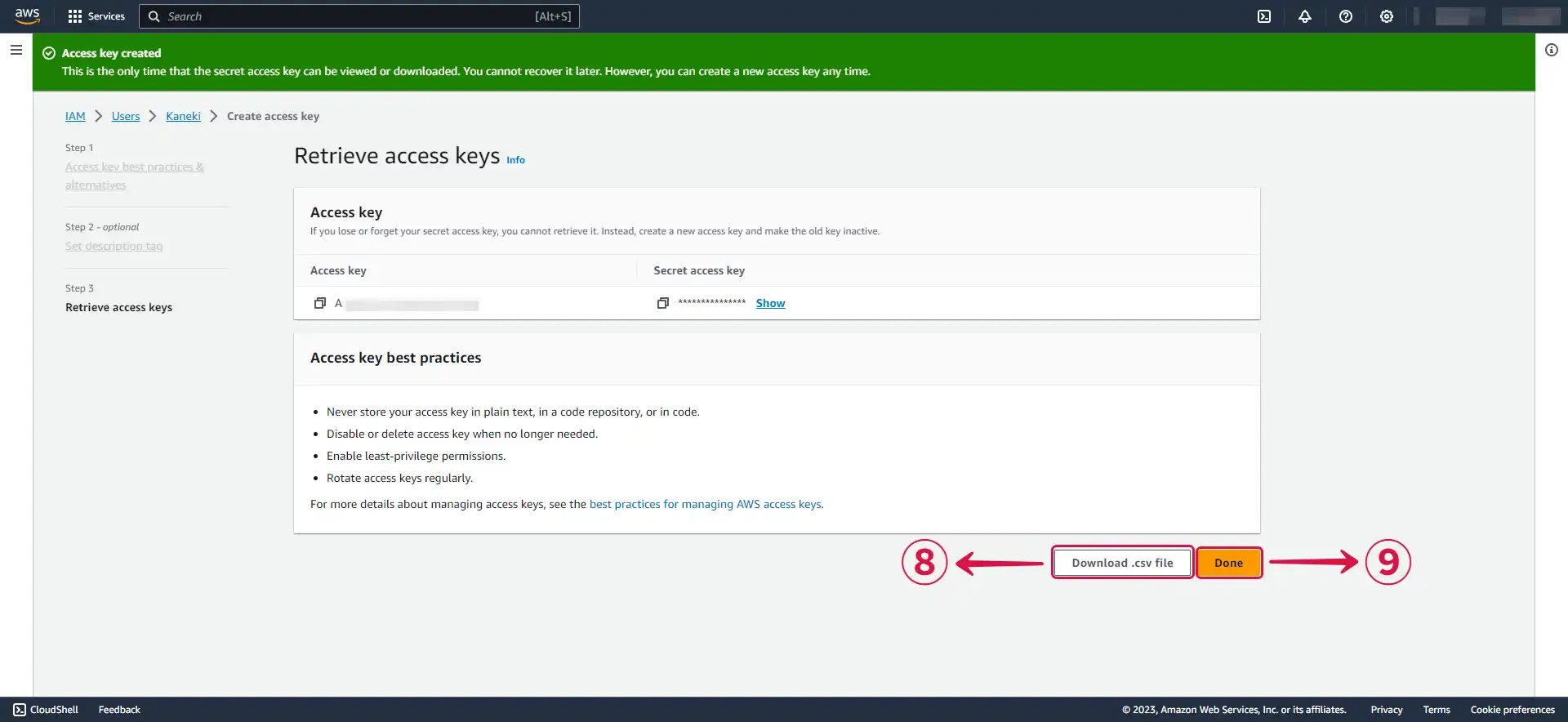
Step 3: Amazon S3 Connection Settings
To set up S3 Sink in Vanus Connect:
- Enter your Access Key① and Secret access Key② in Vanus Connect from the previous steps.
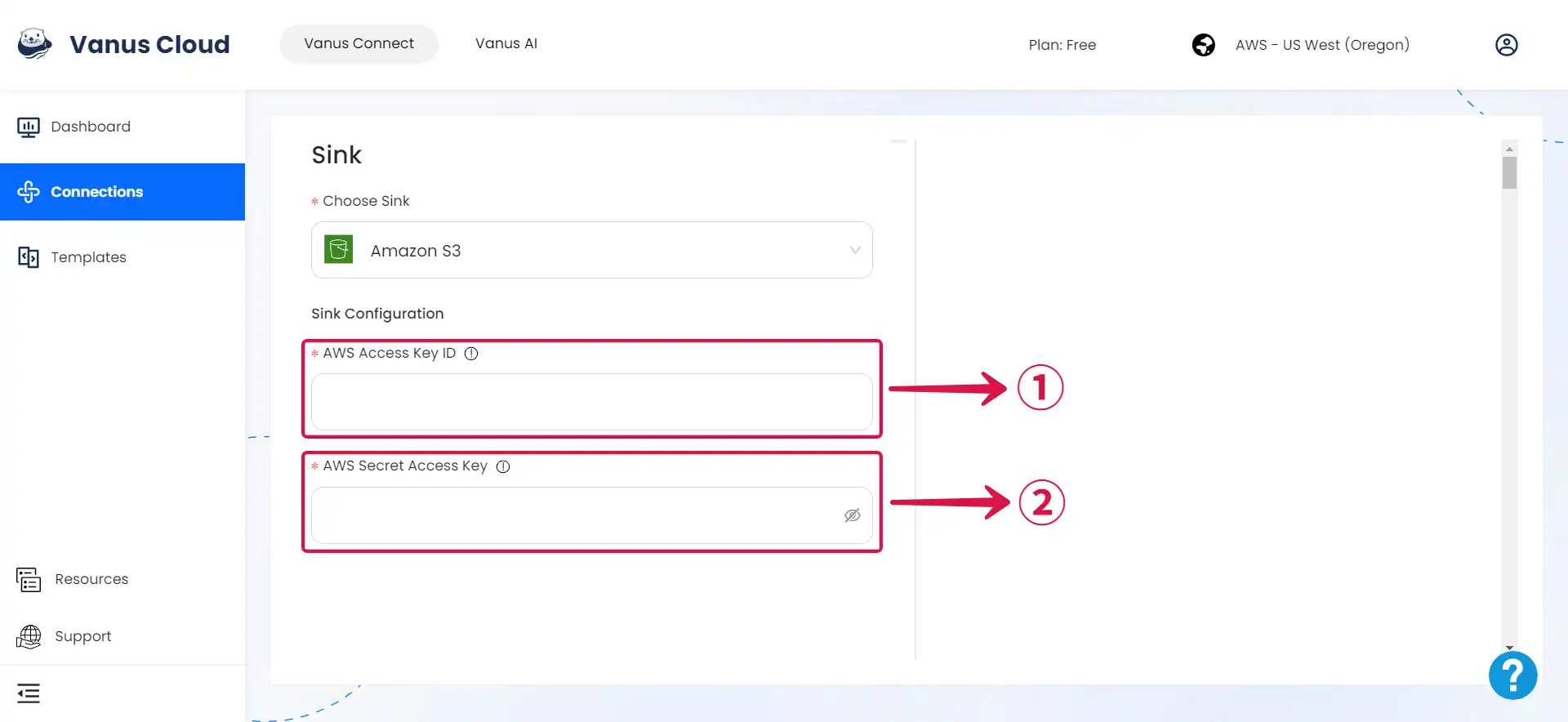
Now let's go back to Amazon Web Services under the Amazon S3 service.
At this point, you can either create a new bucket or select an existing bucket.
Create a new bucket by clicking the Create bucket③ button.

- Specify a Bucket name④ and select your desired AWS Region⑤.

- Click on Create bucket⑥ to finish creating your bucket.

- After selecting or creating a bucket, remember to take note of your bucket name⑦ and the AWS Region⑧.
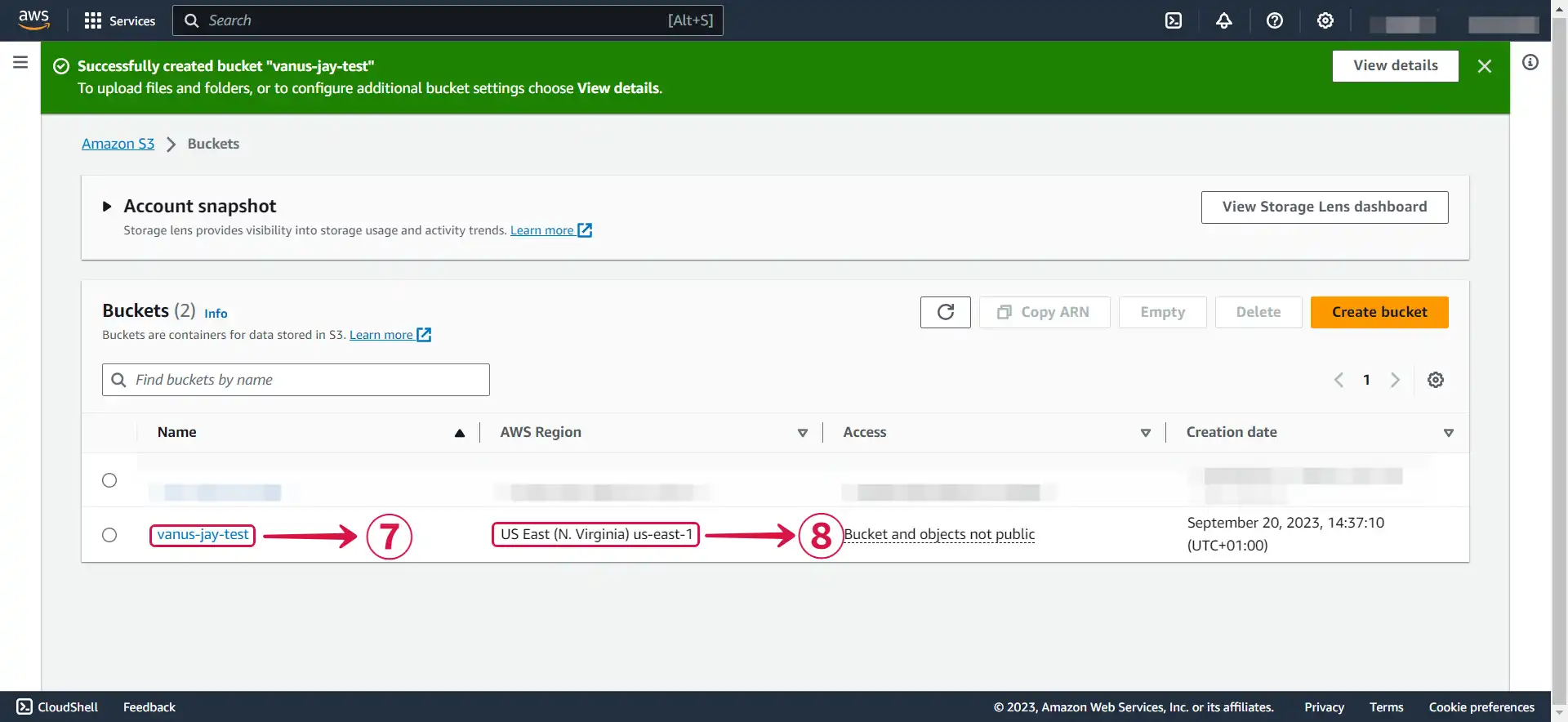
- In Vanus Connect, choose your Region⑨ and enter your Bucket⑩ name, select the upload interval time⑪ (
HOURLYorDAILY).
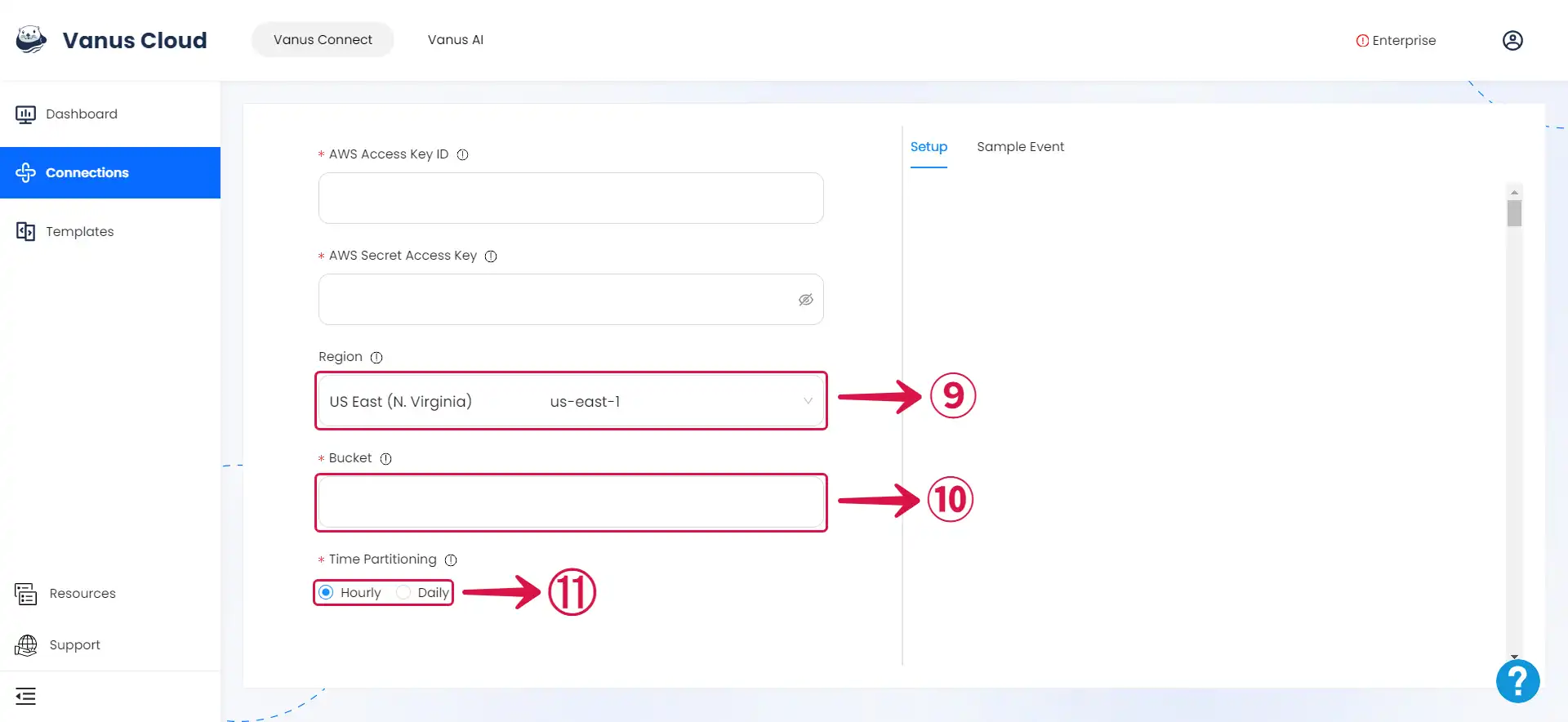
Step 4: Personalize Event Structure
This is a general instruction on how to personalize your event structure. You can structure your events to suit your specific requirements and create connections for different scenarios.
- Click on Display sample events① for reference and click on Add More② to add events.
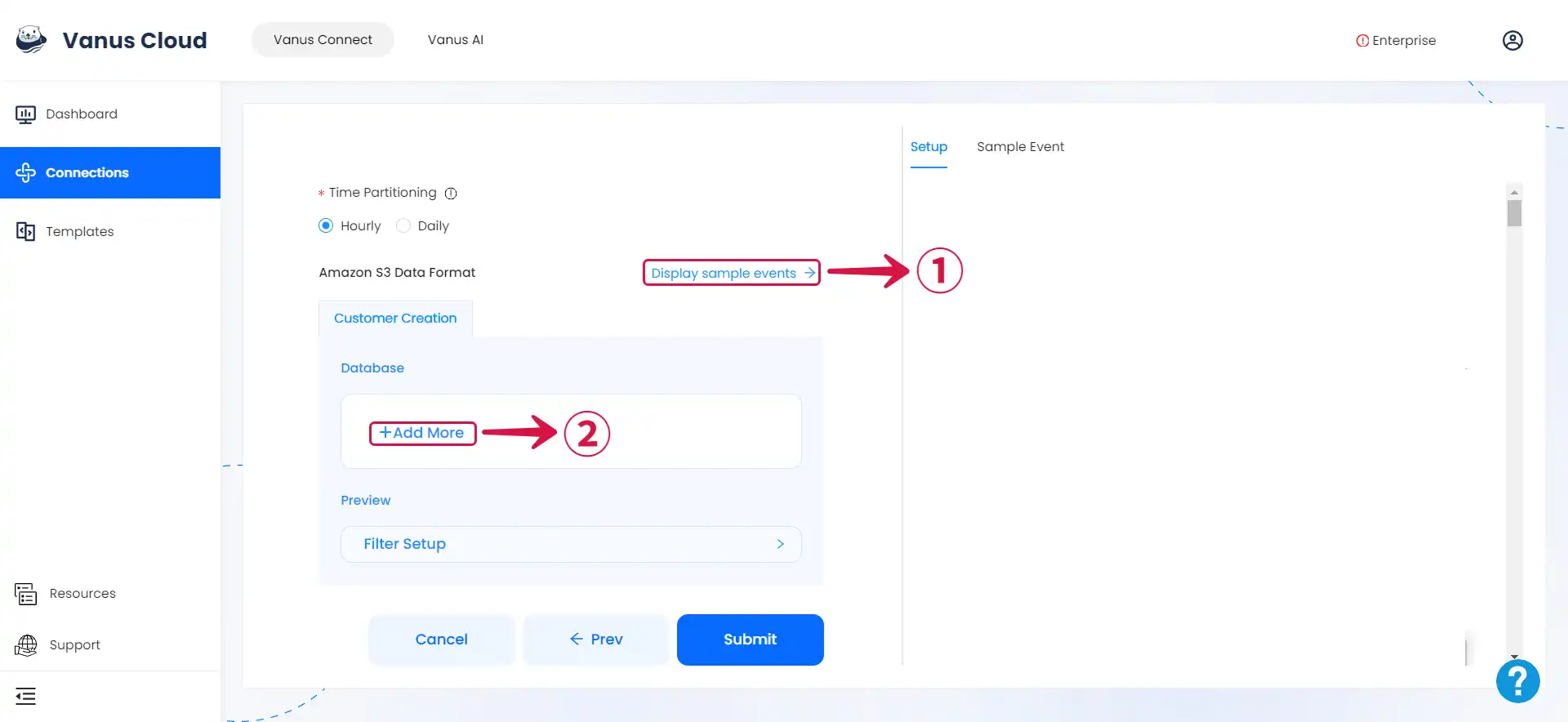
- Input key③ and search for the corresponding value④ for the event you want.
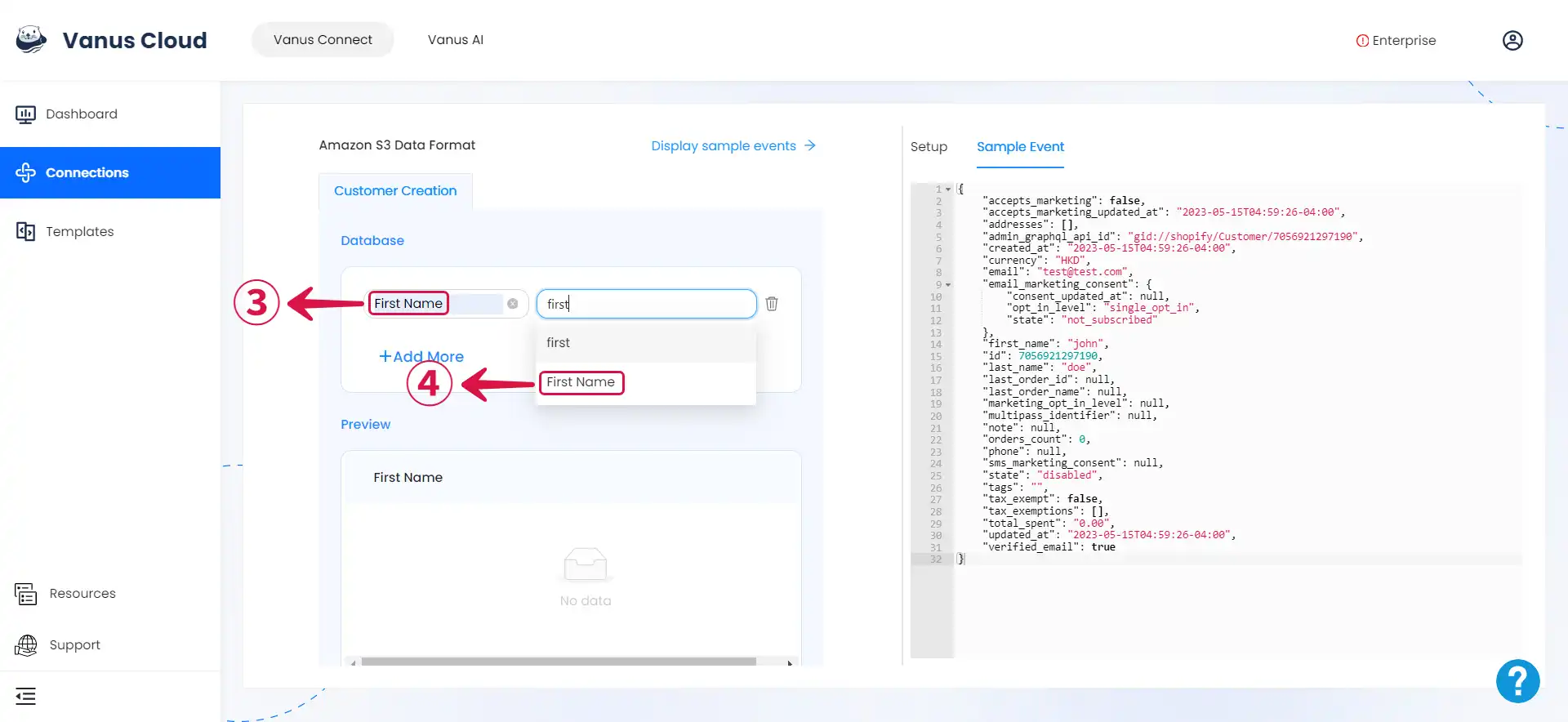
- You can fill in as many key-value pairs⑤ as you wish to receive.
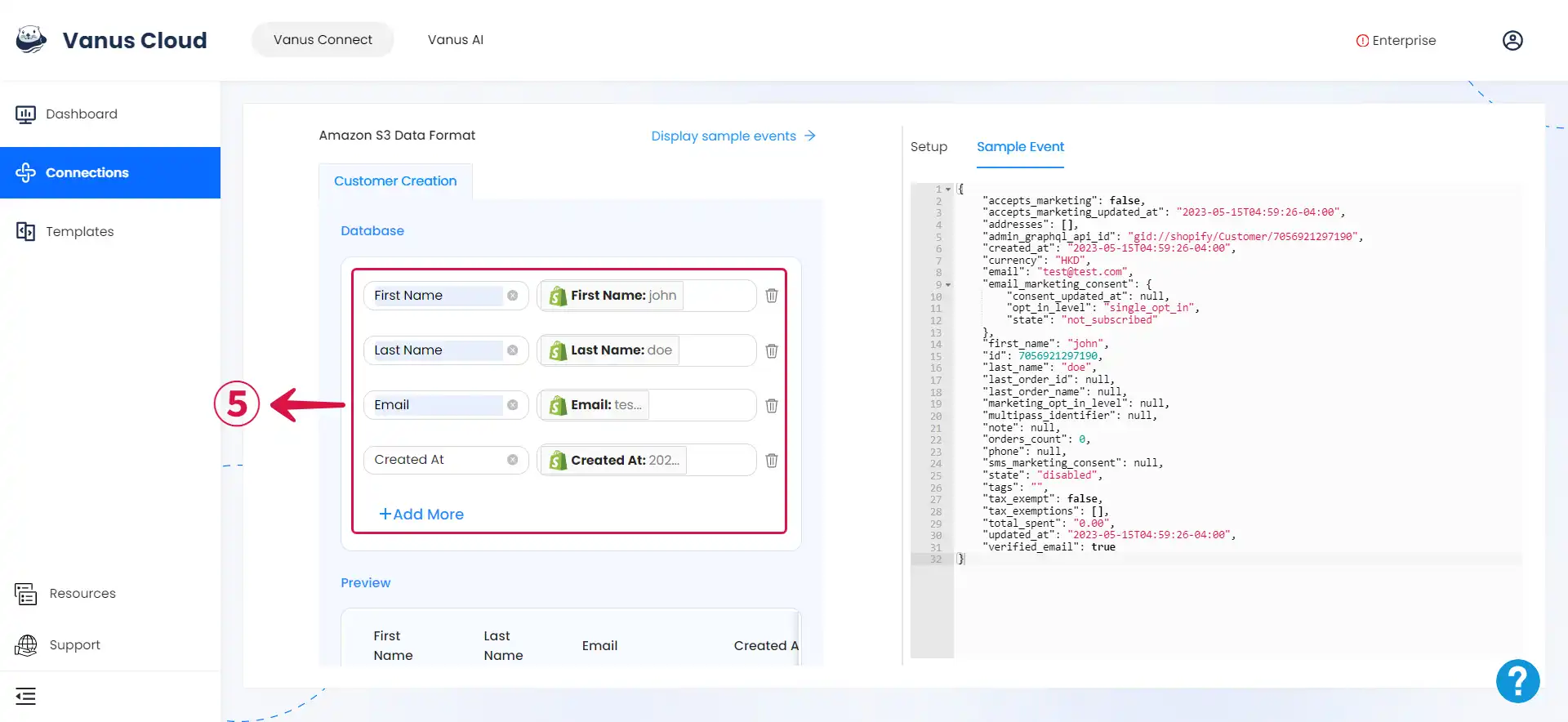
- Click Submit⑥ to finish the configuration process.
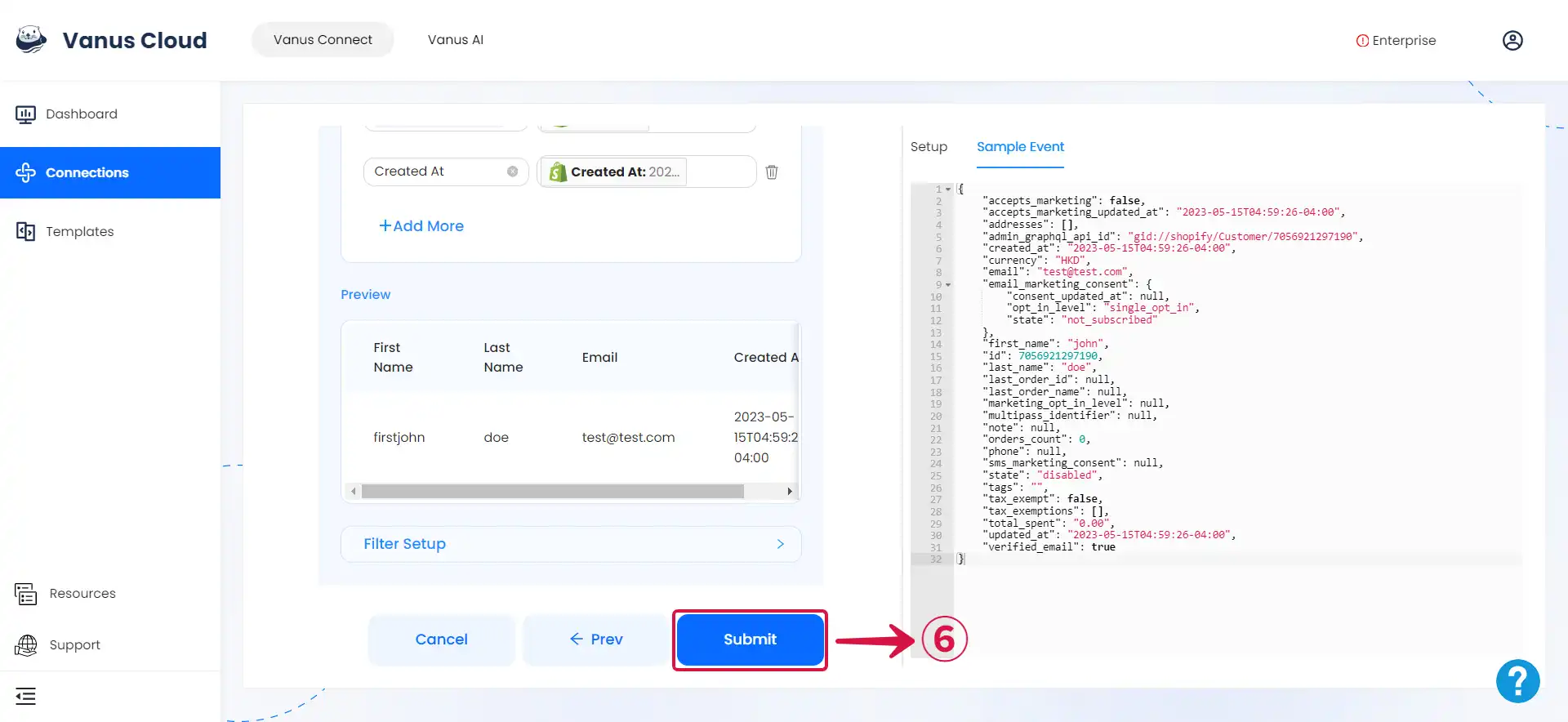
Required Data Format
The event data must be in JSON format with the following way:
{
"data": {
"myData": "simulation event data"
}
}